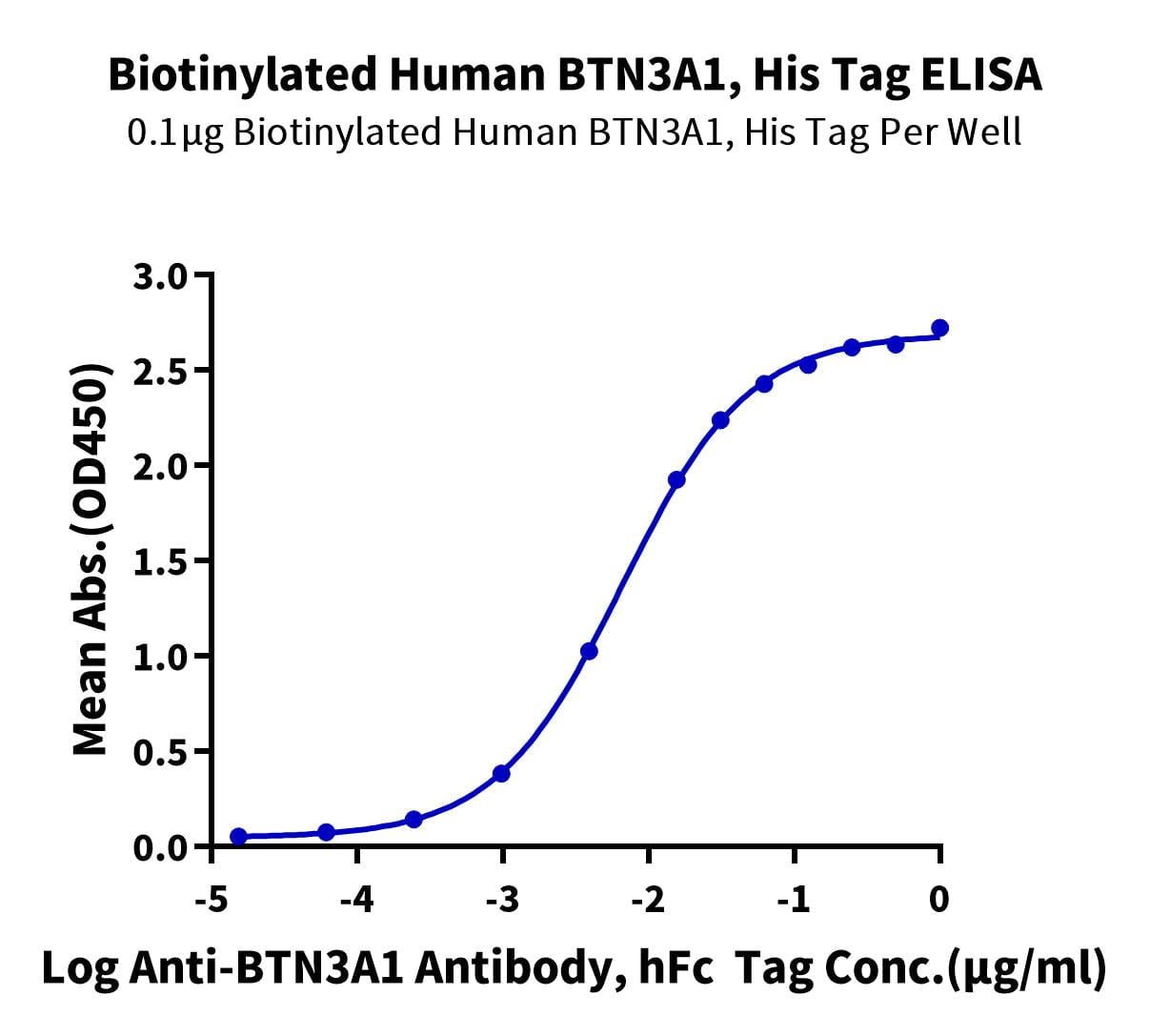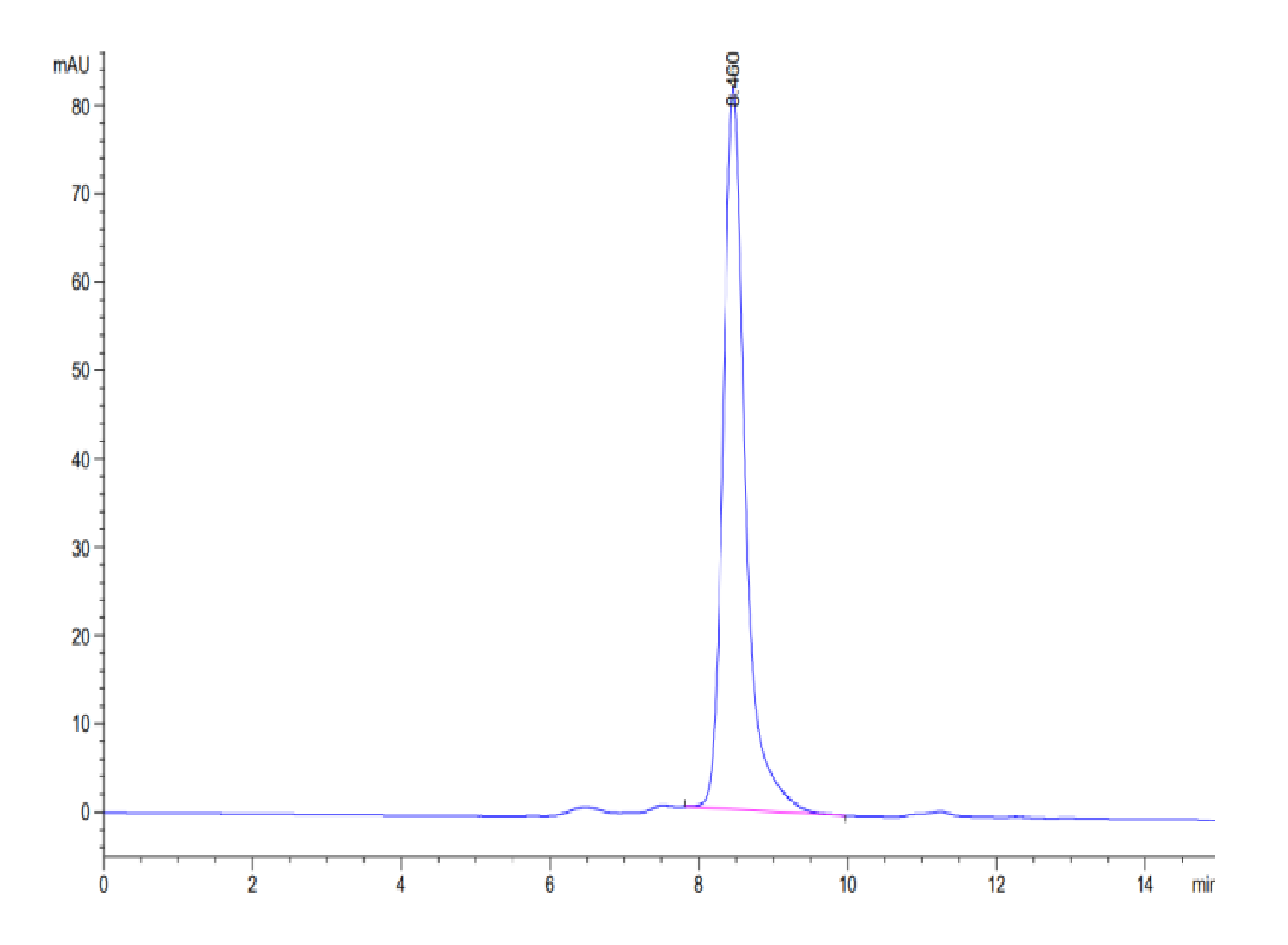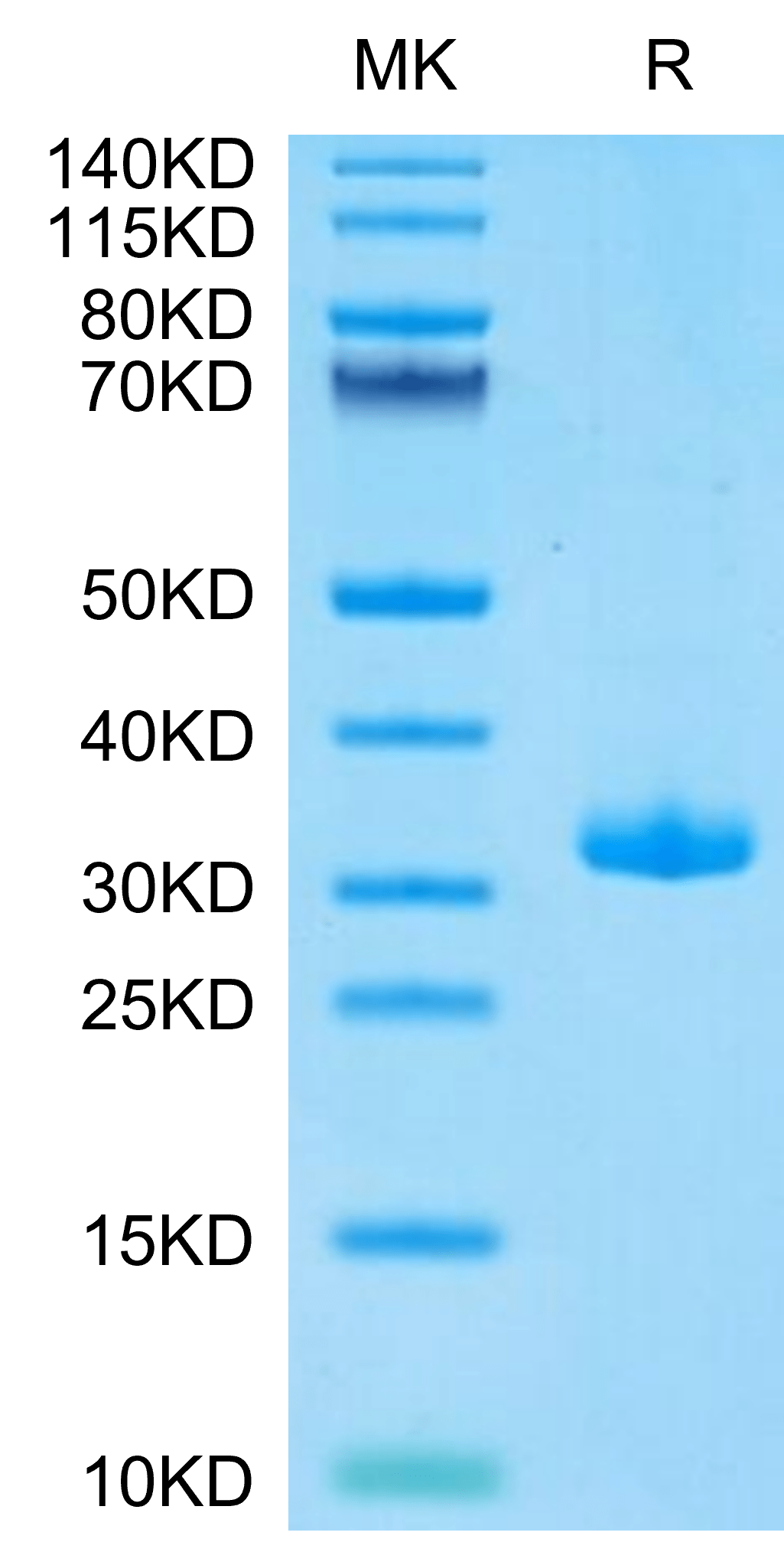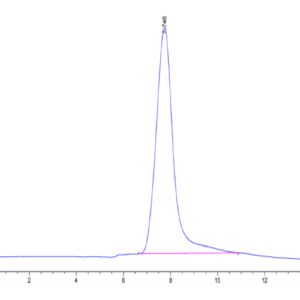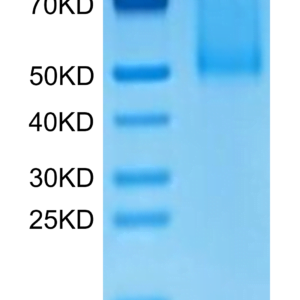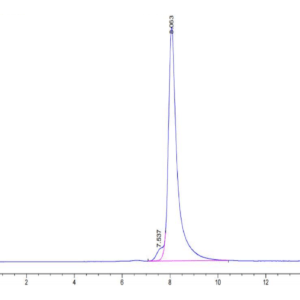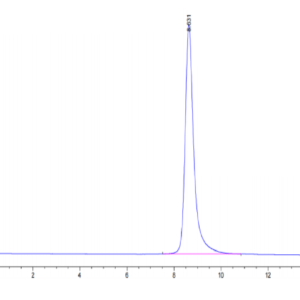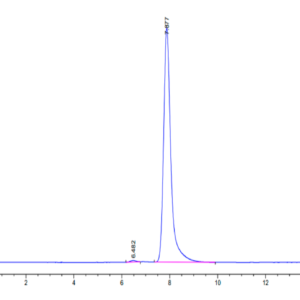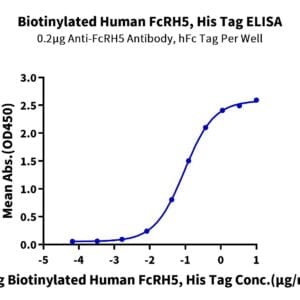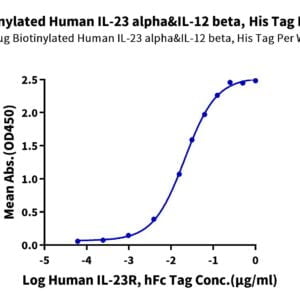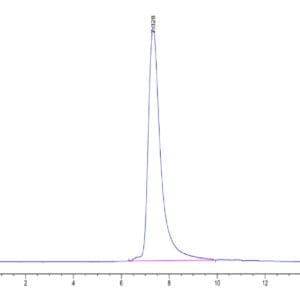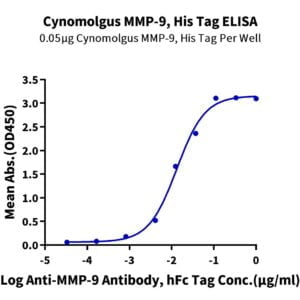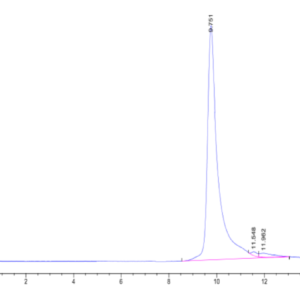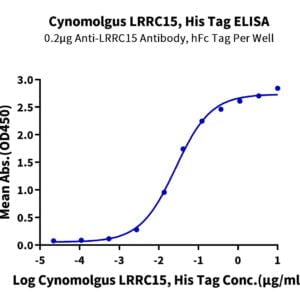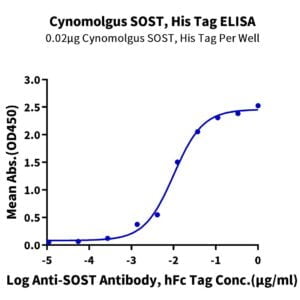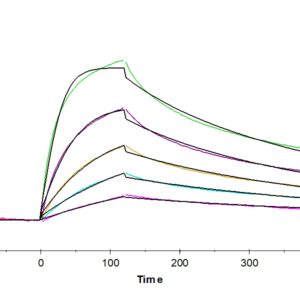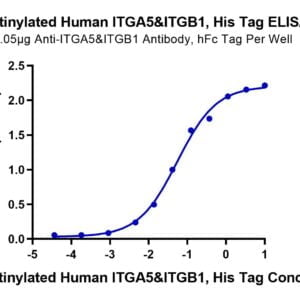| Weight | 1 lbs |
|---|---|
| Dimensions | 9 × 5 × 2 in |
| express system | HEK293 |
| product tag | C-His-Avi |
| purity | > 95% as determined by Tris-Bis PAGE;> 95% as determined by HPLC |
| background | The three butyrophilin BTN3A molecules, BTN3A1, BTN3A2, and BTN3A3, are members of the B7/butyrophilin-like group of Ig superfamily receptors, which modulate the function of T cells. BTN3A1 controls activation of human Vγ9/Vδ2 T cells by direct or indirect presentation of self and nonself phosphoantigens (pAg). |
| molecular weight | The protein has a predicted MW of 27.1 kDa. Due to glycosylation, the protein migrates to 30-35 kDa based on Tris-Bis PAGE result. |
| available size | 100 µg, 500 µg |
| endotoxin | Less than 1EU per ug by the LAL method. |
Biotinylated Human BTN3A1/CD277 Protein 3371
$525.00 – $1,750.00
Summary
- Expression: HEK293
- Functional: Yes (ELISA)
- Amino Acid Range: Gln30-Gly254
Biotinylated Human BTN3A1/CD277 Protein 3371
| protein |
|---|
| Size and concentration 100, 500µg and lyophilized |
| Form Lyophilized |
| Storage Instructions Valid for 12 months from date of receipt when stored at -80°C. Recommend to aliquot the protein into smaller quantities for optimal storage. Please minimize freeze-thaw cycles. |
| Storage buffer Shipped at ambient temperature. |
| Purity > 95% as determined by Tris-Bis PAGE |
| target relevance |
|---|
| The three butyrophilin BTN3A molecules, BTN3A1, BTN3A2, and BTN3A3, are members of the B7/butyrophilin-like group of Ig superfamily receptors, which modulate the function of T cells. BTN3A1 controls activation of human Vγ9/Vδ2 T cells by direct or indirect presentation of self and nonself phosphoantigens (pAg). |
| Protein names Butyrophilin subfamily 3 member A1 (CD antigen CD277) |
| Gene names BTN3A1,BTN3A1 BTF5 |
| Protein family Immunoglobulin superfamily, BTN/MOG family |
| Mass 57677Da |
| Function Plays a role in T-cell activation and in the adaptive immune response. Regulates the proliferation of activated T-cells. Regulates the release of cytokines and IFNG by activated T-cells. Mediates the response of T-cells toward infected and transformed cells that are characterized by high levels of phosphorylated metabolites, such as isopentenyl pyrophosphate. |
| Subellular location Cell membrane ; Single-pass type I membrane protein . |
| Tissues Detected on T-cells, natural killer cells, dendritic cells and macrophages (at protein level). Ubiquitous. Highly expressed in heart, pancreas and lung, Moderately expressed in placenta, liver and muscle. |
| Structure Homodimer. |
| Post-translational modification N-glycosylated. |
| Target Relevance information above includes information from UniProt accession: O00481 |
| The UniProt Consortium |
Data
Publications
Publications
| pmid | title | authors | citation |
|---|---|---|---|
| We haven't added any publications to our database yet. | |||
Protocols
| relevant to this product |
|---|
Documents
| # | ||
|---|---|---|
| Please enter your product and batch number here to retrieve product datasheet, SDS, and QC information. | ||
